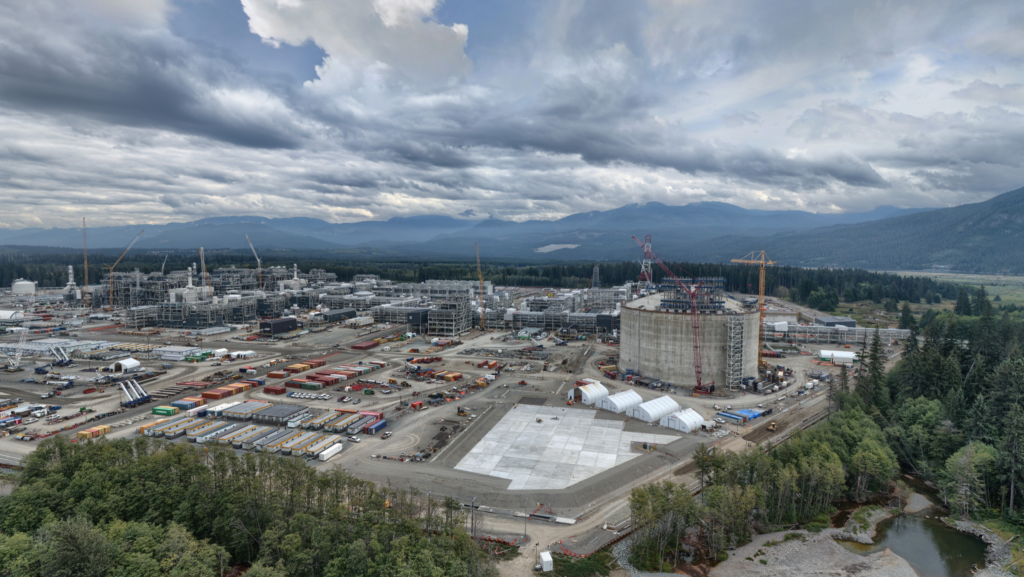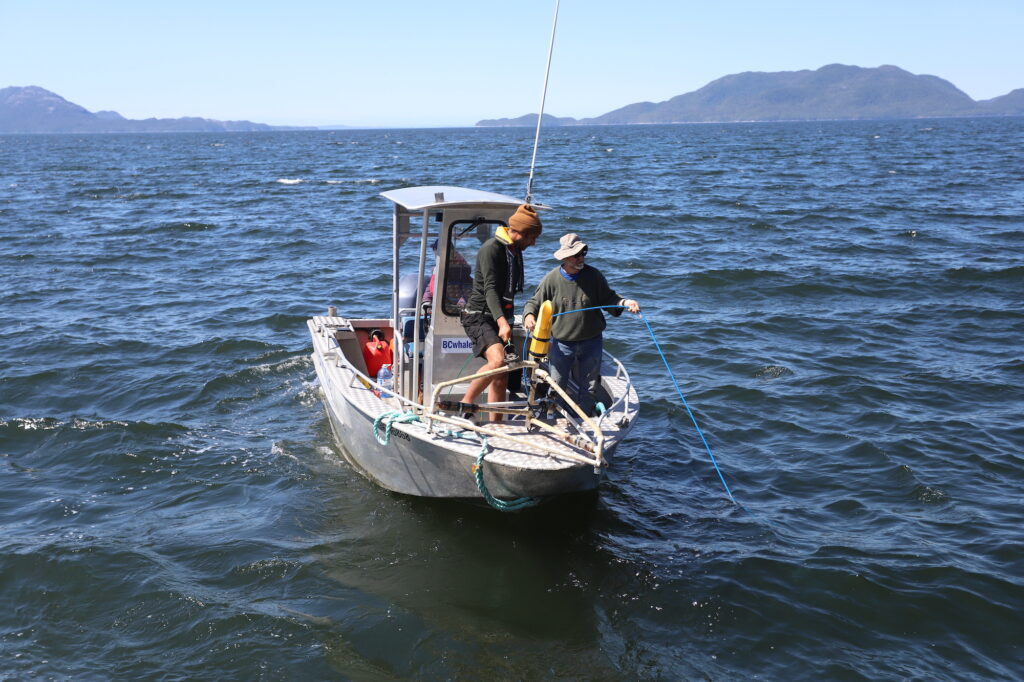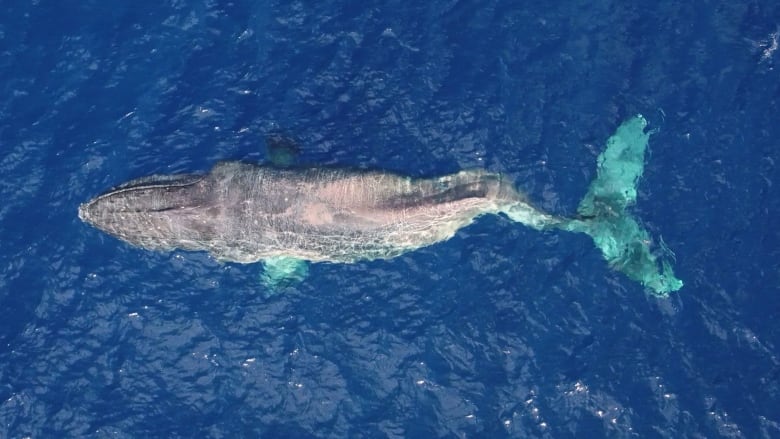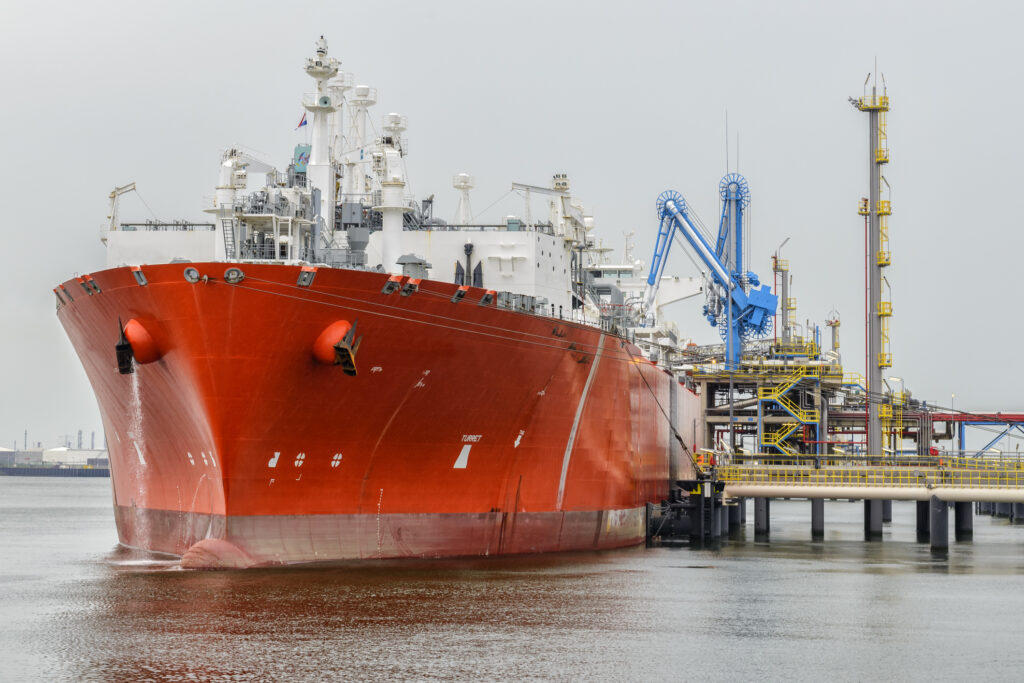The coastal waters of northern BC have recently seen a remarkable resurgence in fin and humpback whales after they nearly went extinct a century ago due to commercial whaling. However, a newly published study in Endangered Species Research warns of a looming threat that could undo that progress. Shipping traffic related to the Liquified Natural Gas (LNG) export terminal currently under development in Kitimat is expected to increase whale deaths from ship strikes, endangering these vulnerable populations. West Coast Now spoke to Janie Wray, co-author of the paper and CEO of the marine research organization North Coast Cetacean Society, to discuss the impact of ship traffic on local whale populations and possible mitigation strategies for what she and fellow experts are predicting could be a “nightmare” scenario.
Alarming Number of Collisions
The peer-reviewed study, authored by experts from organizations such as the North Coast Cetacean Society, University of St. Andrews, Fisheries & Oceans Canada, and WWF-Canada, paints a grim picture for the future of coastal whales. Their research focused on the impact of the massive $38 billion LNG Canada terminal outside Kitimat. When it opens in 2025, the facility will export 26 million metric tons of LNG a year from Canada to Asian markets and beyond. The project is set to significantly boost shipping traffic in the lower Kitimat Fjord System on Gitga’at First Nation territory by adding 350 new ships (or 700 trips) passing through each year. The trip to and from open ocean to Kitimat will have LNG ships travelling the length of the Douglas Channel, which is part of the lower Kitimat Fjord System.

The authors calculated that by 2030, this could result in 30 times more fatal collisions of whales and large vessels along the coastal route. Their modelling predicted that two fin whales and 18 humpback whales could die each year due to ship strikes, a substantial increase from the current estimated figures of less than one fin whale and three to four humpback whale deaths annually.
When Janie Wray’s co-author and fellow scientist, Eric Keen, modelled the numbers for estimated whale strikes in the area, she couldn’t believe his conclusions at first. “When Eric first came to us with those numbers, we were like, we should re-look at this. These numbers are so high,” she said. Keen confirmed the numbers were indeed correct and based on a number of detailed sources: Automatic Identification System (AIS) databases, line-transect surveys, shore-based monitoring, whale-borne tags, aerial drone-based focal follows, and iterative simulations.
The authors of the study argue that expected whale fatalities could potentially reverse the very recent recovery of whale populations in the region. Canadian Pacific fin whales and humpback whales are currently listed as at risk with a status of “Threatened” and “Special Concern,” respectively, under the Species At Risk Act (SARA). With “the vessel traffic increasing, and when LNG goes through, it’s pretty much going to be a nightmare,” Wray said.
SWAG with Gitga’at Nation

A crucial part of the study was a collaboration with the Coastal Guardians of the Gitga’at Nation, whose territory this research took place on. The study relied on the data collected by the SWAG (Ships, Whales, & Acoustics in Gitga’at Territory) Project, collaboratively developed by the Gitga’at First Nation, North Coast Cetacean Society (NCCS), and WWF Canada. SWAG’s mission is to participate in research for “reducing the risk of acoustic disturbance and ship strikes to whales in Gitga’at Territory and building local and Gitga’at capacity to monitor whales and vessels and support decision making related to managing the impacts of shipping in Gitga’at Territory.”
“Gitga’at has been working with the shipping industry and managers on shipping guidelines to foster greater waterway safety in our territory. We will continue that work to encourage and insist on implementing measures that better protect whales.”
Gitga’at Nation
The project uses hydrophones to identify and track whales and ships to understand how whales respond to the noise pollution and movement created by shipping traffic. Wray acknowledged Gitga’at Guardians “have been out there collecting their own data for a long period of time in collaboration with us as well” and said that her team “just wouldn’t be there without them basically.”
Though the Gitga’at Nation is supportive of the LNG project and has signed on to Benefits Agreements with the provincial government, they are committed to understanding the project’s impact on their marine ecosystem. In a statement, the Nation said, “Gitga’at has been working with the shipping industry and managers on shipping guidelines to foster greater waterway safety in our territory. We will continue that work to encourage and insist on implementing measures that better protect whales.”
Whale Strikes Already High

“We have a large number of humpback whales returning back to the coast of BC, but boaters are not used to interacting with whales at this scale.”
Janie Wray, CEO of North Coast Cetacean Society
Even without the increase in ship traffic, BC whales experienced a number of deadly collisions this summer. Between July and August, there were eleven boat strikes on humpback whales from BC Ferries ships, a cruise ship and a catamaran ferry. West Coast Now previously covered the incredible story of Moon, the humpback whale, who swam 4800 kilometres from BC to Hawaii without the use of her tail after being injured by a boat in coastal waters. She likely died as a result of infection or starvation due to lack of mobility, an all-too-frequent end for whales struck by ships.
“We have a large number of humpback whales returning back to the coast of BC, but boaters are not used to interacting with whales at this scale,” Wray said about the recent collisions. “I don’t think we have the rules in place on how to deal with it, not just with large vessels, but with small small vessels.” She stated that boaters may be more used to orcas, who travel in groups and are easier to spot. However, “people just don’t know how to behave around a humpback whale,” she said. “They’re unpredictable; they’re so unpredictable.”
Jackie Hildering, Education and Communications Director of the Marine Education and Research Society, explained in an interview earlier this year that humpbacks and other baleen whales do not have biosonar or ‘echolocation’ like orca whales and are often oblivious of boats, especially when feeding or resting. “They can suddenly surface after long dives or be resting or nursing just below the surface,” Hildering told us, which makes them much more susceptible to accidents.
Mitigation

The predictions in the study are dire, but Wray says there is still time to act if proactive measures are taken to mitigate ship-strike risks. The most effective action identified by her and her colleagues would be a seasonal restriction on passage through the area. August and September are the busiest months for whales in the Douglas Channel, and they argue a moratorium on ships would be a best-case scenario. “I highly doubt that they’re not going to operate for two months of the year,” Wray said realistically. “It’s just letting them know that those are the two months that they really, really have to be careful. But in a perfect world [there would be] no vessels those months.”
She is hoping industry will be more likely to adopt ‘slowdown zones’ that reduce vessel speeds, particularly for large ships, and could significantly decrease potentially fatal whale strikes. Wray also pointed out “that just slowing down makes a huge difference in regards to ocean noise.” Increased vessel noise affects the whales’ communication and navigation abilities, she explained, further disorienting them and putting them at risk.
“We have a lot of work to do in regards to how we behave around whales with boats.”
Janie Wray, CEO of North Coast Cetacean Society
Thus far, LNG Canada has said they plan for their ships to travel less than ten knots within the Kitimat Fjord System, “but they also acknowledged that speed will be determined on a per-transit basis by pilots according to conditions and port schedules, and that maneuverability will take precedence over slow transit speeds,” according to the report. The corporation is also required to have a marine mammal management program, which has yet to be released.
Recovery Under Threat
“We have a lot of work to do in regards to how we behave around whales with boats,” said Wray. Not just the large vessels shipping LNG, but small vessels and recreational boaters too. She advocates for more slowdown zones, similar to school zones, to be implemented in certain whale hotspots along the coast for all vessels. She’d also love to see boaters learning more about whale safety when they get their licences to understand the impact of their vessels on whales in regard to things like noise pollution. “Those two things I think would make a huge difference for whales,” she told us.
As for LNG Canada, Wray and her colleagues hope the industry will heed their study’s warning before it’s too late. “We are the eyes on the water, and we are there on a daily basis. We’re doing land-based scans and marine vessel surveys within the territory, and I think they’ve become well aware of it,” she said. “There have been a couple of conversations, and I’m hoping that there is potential to continue those so that maybe they will listen to some of the recommendations that we’re making.”
Otherwise, without voluntary or mandated action to adopt the suggested measures, the collisions will increase. More ship strikes, the study warns, would mean “unsustainable losses” to the remarkable but fragile recovery of humpback and fin whales in BC coastal waters.






